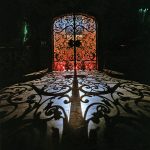-
Beyond the Simple
April 2013

Olympic Stadium, Beijing – China by Herzog and De Meuron
Architectural design has always been inexplicable through logic and indescribable through words, yet been a successful intuitive rational solution for many complex design problems throughout the times. However with the advent of new technology the conventional design process has been pressured to change and adopt innovative new tools, media, procedures that comprise of complex inputs to achieve design outputs that are beyond simple in relation to the current architectural norms.
by Chanaka Ariyarathna
These new trends of advanced architectural design using digital multi-dimensional models and generative forms, proceed the traditional system of merely using the three dimensional models as graphics or animated renderings for purposes confined to presentation work. Although uncommon in the local context, internationally it has reached a level of being increasingly used in finding solutions for complex designs.
This results in a simplistic design through complex derivative tools that involves the same design logics but in a different medium than traditional paper where design inception is always welcome to happen, but too complex for design development.
The techniques also overtake the limitation of thinking physicalities, opening doors for more interesting conceptual approach in all aspects of the design. Seamless integrations of variant forms, hyper-surfaces, coplanar transformations are few possibilities of this new trend that challenge traditional architectural idioms and modes of design creativity.
Although the tools and techniques used in such circumstances require in depth knowledge of different software, this is not the “essence of the design”. They purely create a complex platform that easily communicates complex human design ideas to engineer-able medium.
The flavour of such fruits of design exhilarates unique conceptual ideology that would be an ideal eye-opener to the current local context that sits too comfortably within traditional methods. Acceptance of such an experimental and speculative approach to architecture would be a catalyst to the production of theoretical, analytical and critical studies on and in advanced architectural design. This in return would address and redefine new trends and knowledge in the field of architecture and design framework strongly supported by theoretical components. However, one should understand that progress is the accidental outcome of human ingenious and curiosity, and not mere acceptance of new advanced technologies and tools.
The use of such advance architectural design is at large in the international sphere, ranging from small residences to large complex projects. In example the works of Zaha Hadid represent iconic advanced architectural designs with unique flowing characteristics and continuous spaces. The designs are rooted in simple Supermatism; derivate complex compositions that can be seen throughout her work. She creates prototypes of reality by understanding the changes of the world and creating new structures for it. Creation of shapes that are expressive, freedom that challenges the field of design and conventionalisms are often seen in almost all of her architectural work.
The practice of such design vindicates to much simpler applications but with a unique outcome as for works of Herzog and De Meuron. With clean sharp edges, a dialect profound to them, the designs integrate and execute simple spatial compositions and sculptural geometry.
It is with the understanding of the evolved design process with respect to our times that we are faced with the question: “is what we call contemporary, truly contemporary?” Or are we lagging behind. Or is it mere disclose relative to the needs and trends of the culture and the people ignoring the vast creative platform that technology has induced.
Thirteen years after the millennium, Sri Lanka is yet to fully grasp these sensual styles and expressions of architecture that leaves the contemporary style to be redefined.
This generates a potential need to rethink the design solutions of being simple, to more in depth complex ideas that require overall challenging processes that push current technological boundaries.
Being content with the design production system and repetition of design creates a butterfly-effect that results in inside-the-box thinking due to being overly comfortable within the context.
With prudent venture into modern out-of-the box design, local professionals will realise, a much invited equilibrium, within local and foreign consultancy on design projects. The efficacy of looking beyond the simple to find answers, for problems not just architectural is a much needed paradigm in the local context. It is this induction that is required to create a new thinking to a country that emnates high potential of being greater than the simple.



















